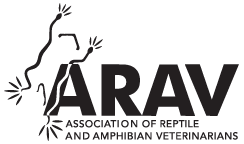Ophidiomycosis Outbreak in Captive Green Anacondas (Eunectes murinus): Management and Therapeutic Trials
Ophidiomycosis, caused by the fungus Ophidiomyces ophidiicola, is an emerging disease in wild and captive snakes. Very few clinical cases are reported in green anacondas (Eunectes murinus). Twelve green anacondas were born in a French zoo in November 2021. They were isolated in several racks a few days after their birth for easier husbandry. Two months later, five snakes had cutaneous lesions, including discolored or displaced scales, pustular dermatitis with whitish discharge and ulcers. A fungal dermatitis due to O. ophidiicola was diagnosed by fungal culture, histology and PCR performed on skin exfoliates. A screening of the whole litter, the dam and the snakes sharing the same room was performed. Three young anacondas were PCR positive and transmission by the dam was highly suspected. Strict disinfection of the racks and equipment were implemented, as well as immediate removal of the sheds from the environment. Terbinafine was used to treat the symptomatic snakes and their conspecifics sharing the same rack; initially by spray (Lamisil 1%, GSK, Rueil Malmaison, France), then nebulizations (terbinafine 250 mg, Mylan, 2 mg/mL solution) in a box. All treated snakes were PCR negative after a one-month treatment, but several snakes became PCR positive again during long term monitoring. A six-month old anaconda died of suspected systemic ophidiomycosis. This animal was PCR negative on cutaneous swab three times before death but never gained weight. Coelomic ultrasound was normal on the remaining green anacondas.Abstract
Contributor Notes



